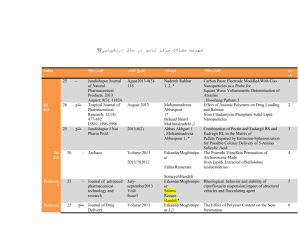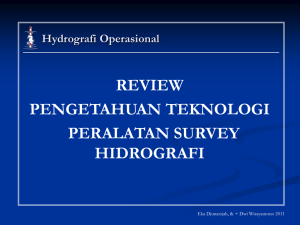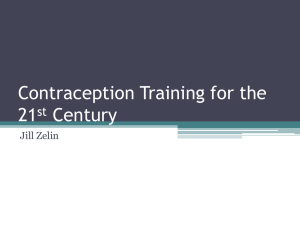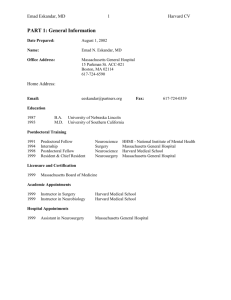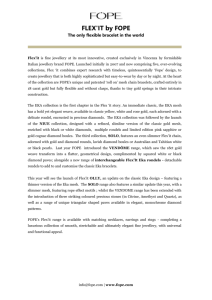project design
advertisement
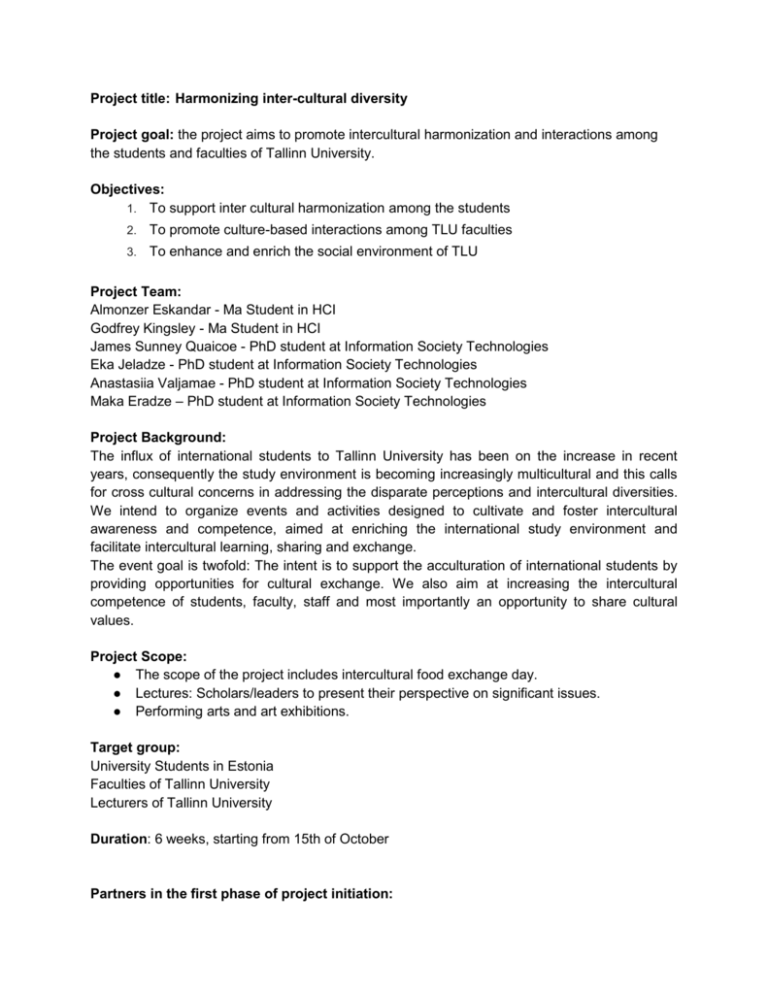
Project title: Harmonizing inter-cultural diversity Project goal: the project aims to promote intercultural harmonization and interactions among the students and faculties of Tallinn University. Objectives: 1. To support inter cultural harmonization among the students 2. To promote culture-based interactions among TLU faculties 3. To enhance and enrich the social environment of TLU Project Team: Almonzer Eskandar - Ma Student in HCI Godfrey Kingsley - Ma Student in HCI James Sunney Quaicoe - PhD student at Information Society Technologies Eka Jeladze - PhD student at Information Society Technologies Anastasiia Valjamae - PhD student at Information Society Technologies Maka Eradze – PhD student at Information Society Technologies Project Background: The influx of international students to Tallinn University has been on the increase in recent years, consequently the study environment is becoming increasingly multicultural and this calls for cross cultural concerns in addressing the disparate perceptions and intercultural diversities. We intend to organize events and activities designed to cultivate and foster intercultural awareness and competence, aimed at enriching the international study environment and facilitate intercultural learning, sharing and exchange. The event goal is twofold: The intent is to support the acculturation of international students by providing opportunities for cultural exchange. We also aim at increasing the intercultural competence of students, faculty, staff and most importantly an opportunity to share cultural values. Project Scope: ● The scope of the project includes intercultural food exchange day. ● Lectures: Scholars/leaders to present their perspective on significant issues. ● Performing arts and art exhibitions. Target group: University Students in Estonia Faculties of Tallinn University Lecturers of Tallinn University Duration: 6 weeks, starting from 15th of October Partners in the first phase of project initiation: 1. 2. Erasmus Student network The Student Union Needs Analysis: Estonia is catching the eyes of the world not only Europe, that is what we see when we get to know all the nationalities that are coming here to study and work thriving the knowledge of Estonian finest universities with hope for a work in one of its popular startups. Skype, E-residency, low taxes, clean government and over 14,000 new companies registered in 2011, with big possibilities come bigger responsibilities and with all the people coming to Estonia one should think of ways to strengthen the bound between the incomers and the locals, so both of them can be comfortable enough to participate in the well being of this great country. Our project aims to -work on this bound to be built on a strong base of mutual understanding and promote culture-based interactions among students and faculties members of our beloved university TLU; with a vision of A harmonized community full of diversity and intercultural relations. Work packages, key deliverables and activities: 1. Information dissemination to student and staff of TLU. International student council operates in Tallinn University, which has experience about organizing different events for students. Project team will contact the council to share its experience, learn about the students’ nationalities represented in TLU, as well as possible communication channels and the best ways to involve them in the proposed project events. Information will be prepared and communicated through the channels identified. 2. Identification of the leaders of the events. The leaders will be the volunteers willing to share their culture and tradition with the audience either by representing their national food or specific aspects of the tradition/culture. Leaders will be invited to present their culture either in national groups or individually. By the end of 3 rd week the list of participant groups/individuals as well as their presentation plans will be agreed on. 3. Student survey on the adaptation to new culture Project team will prepare survey and hold interviews with the international and local students. International students will be asked on their adaptation experience and living in a new culture. Estonian students will be asked to reflect on the challenges identified by internationals, how these aspects can be approached from their cultural perspectives. The survey will be analyzed and put on the blog in order to help new comers to be better prepared to live in Estonia. 4. Organization of the event: food exchange festival The event will be organized to present national food from different countries. Volunteers will bring their national food for the participants to try. They will have opportunity to present tradition connected to the meal, as well as the ingredients and instructions to cook. The information (text about the ingredients/tradition, either video on the preparation procedures) will be shared on the blog for the interested guests to follow and enrich their cooking and cultural experience. Guestspeakers will be invited. 5. Organization of the event: The cultures that surround us The second event will be dedicated to the presentation of traditions/culture (folk music, national dance, history, monuments and etc.). Volunteer leaders will have opportunity to share their culture either in groups or individually. The event will include Estonian culture presentation as an opportunity for the international students to get more understanding about the culture they are currently residing, and vice versa giving Estonians chance to hold the grasp about the diversity of cultures surrounding them. Guest-speakers will be invited 6. Web-blog creation As the outcome of the project web-blog will be created. The blog will serve as the diary of the project, demonstrating its outputs: - The summary of student experiences on the adjustment to new culture, together with Estonian students’ reflections will be uploaded on the blog for a reference for new students coming to Estonia. - Presentations and videos used during the events will be shared as nice welcoming information for international students. It will also support the local community to embrace cultural variety international students bring to Estonia. Activities 25. 10 1.1 1 8.1 1 15. 11 22. 11 29. 11 Responsibl e person Participant Almonzer Eskandar Eka Jeladze Almonzer Eskandar Eka Jeladze Almonzer Eskandar Eka Jeladze, Anastasiia Valjamae Almonzer Eskandar Eka Jeladze, Godfrey Kingsley, James Sunney Quaicoe, Anastasiia Valjamae Anastasiia Valjamae Almonzer Eskandar, Godfrey Kingsley, Eka Jeladze, James Sunney Quaicoe Anastasiia Valjamae Almonzer Eskandar, Godfrey Kingsley, Collaboration and Information Sharing Meeting with student council Meeting with international student board > Information dissemination and communication with students Preparation of information for the information sharing > > > Survey Preparation of the tools data collection > > > Eka Jeladze, James Sunney Quaicoe data analysis > > > Report on the survey uploaded on the blog James Sunney Quaicoe Almonzer Eskandar, Godfrey Kingsley, Eka Jeladze, Anastasiia Valjamae Godfrey Kingsley James Sunney Quaicoe, Anastasiia Valjamae Project web-blog Setting the blog Prepare the texts, podcasts and upload on the blog > Godfrey Kingsley > > Meeting with the leaders to introduce event plan and their role > > Select and book the venue for the events > > > > Godfrey Kingsley Almonzer Eskandar, James Sunney Quaicoe Eka Jeladze Godfrey Kingsley, Almonzer Eskandar Eka Jeladze Anastasiia Valjamae Eka Jeladze Godfrey Kingsley, Almonzer Eskandar, James Sunney Quaicoe, Anastasiia Valjamae Eka Jeladze Godfrey Kingsley, Almonzer Eskandar, James Sunney Quaicoe, Anastasiia Valjamae Event Prepare the venue setting for the event (tables, chairs, projector, microphone and etc.) Event implementation > > Risk Analysis/Management: Expert knowledge holds it that 5% - 10% of project resources need to be directed to risk management practices (Normark 2014). On the bases of the foregoing, we with the following as the underpinning factors; anticipated risks, risk management action, perceived risk occurrence period and personnel assigned to handle the situation. Table 1, matrix of possible risk and the related actions and personnel to address them. Table 1: Risk analysis and management strategy S/ N Risk Type Possible point of occurrence Risk Reduction Strategy Personne/Actors Responsibilities 1 Deficiencies in competence and skills in the project team. Project Initiation Stage. Conduct SWOT on team members. Project Manager. 2 Availability of patrons to showcase national culture. Project Implementation stage. Engage in Collaboration with recognised student organisations and institutions. All project team (members) - with each assigned a specific reference contact. 3 Performances of Project team ( active and inactive responses). Throughout the entire project lifetime. Use various social media platforms to prompt team members. Project Coordinator 4 Time Constraints (Project design and implementation). Throughout the project timeline. Integrate some components within the implementation stage All project team (members) - with each assigned a specific reference contact 5 Project funding. Project implementation stage. 1. with recognised student organisation and institutions for possible support. All project team (members) - with each assigned a specific reference contact. 2. Project will thrive on voluntary participation make project less capital intensive 6 Time/Venue for Project implementation and evaluation Project implementation stage. 1.Compress similar tasks in project timeline, 2.Outsources(collaborate) with leaders of the student organisations to support.. All project team (members) - with each assigned a specific reference contact
